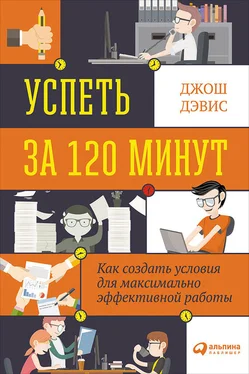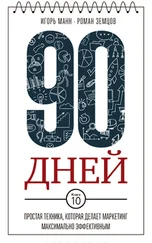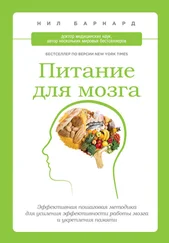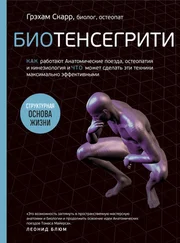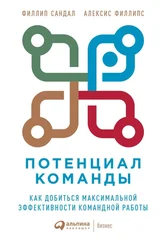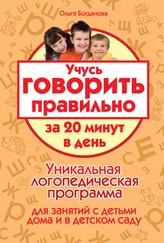Natalie A. Masento et al., «Effects of Hydration Status on Cognitive Performance and Mood,» British Journal of Nutrition 111, no. 10 (2014): 1841–52.
Melanie A. Heckman, Jorge Weil, and Elvira Gonzalez de Mejia, «Caffeine (1, 3, 7-Trimethylxanthine) in Foods: A Comprehensive Review on Consumption, Functionality, Safety, and Regulatory Matters,» Journal of Food Science 75, no. 3 (2010): R77–87.
Peter J. Rogers, «Caffeine and Alertness: In Defense of Withdrawal Reversal,» Journal of Caffeine Research 4, no. 1 (2014): 3–8.
B. M. van Gelder et al., «Coffee Consumption Is Inversely Associated with Cognitive Decline in Elderly European Men: The Fine Study,» European Journal of Clinical Nutrition 61, no. 2 (2007): 226–32; Eduardo Salazar-Martinez et al., «Coffee Consumption and Risk for Type 2 Diabetes Mellitus,» Annals of Internal Medicine 140, no. 1 (2004): 1–8.
Emma Childs and Harriet de Wit, «Subjective, Behavioral, and Physiological Effects of Acute Caffeine in Light, Nondependent Caffeine Users» [in English], Psychopharmacology (Berlin) 185, no. 4 (2006): 514–23.
H. A. Young and D. Benton, «Caffeine Can Decrease Subjective Energy Depending on the Vehicle with Which It Is Consumed and When It Is Measured» [in English], Psychopharmacology (Berlin) 228, no. 2 (2013): 243–54.
Парацельс, цит. по «Викицитатам», из «Die Dritte Defension Wegen Des Schreibens Der Neuen Rezepte,» Septem Defensiones 1538, vol. 2, (Darmstadt, 1965): 510.
Astrid Nehlig, «Is Caffeine a Cognitive Enhancer?» Journal of Alzheimer's Disease 20, suppl. 1 (2010): S85–94.
Karen Alsene et al., «Association Between A2a Receptor Gene Polymorphisms and Caffeine-Induced Anxiety» [in English], Neuropsychopharmacology 28, no. 9 (2003): 1694–702.
Tad T. Brunyé et al., «Caffeine Modulates Attention Network Function,» Brain and Cognition 72, no. 2 (2010): 181–88.
A. S. Attwood, S. Higgs, and P. Terry, «Differential Responsiveness to Caffeine and Perceived Effects of Caffeine in Moderate and High Regular Caffeine Consumers» [in English], Psychopharmacology (Berlin) 190, no. 4 (2007): 469–77.
Peter J. Rogers et al., «Faster but Not Smarter: Effects of Caffeine and Caffeine Withdrawal on Alertness and Performance» [in English], Psychopharmacology (Berlin) 226, no. 2 (2013): 229–40.
Meagan A. Howard and Cecile A. Marczinski, «Acute Effects of a Glucose Energy Drink on Behavioral Control,» Experimental and Clinical Psychopharmacology 18, no. 6 (2010): 553–61.
David A. Camfield et al., «Acute Effects of Tea Constituents L-Theanine, Caffeine, and Epigallocatechin Gallate on Cognitive Function and Mood: A Systematic Review and Meta-Analysis,» Nutrition Reviews 72, no. 8 (2014): 507–22.
James L. Szalma and Peter A. Hancock, «Noise Effects on Human Performance: A Meta-Analytic Synthesis,» Psychological Bulletin 137, no. 4 (2011): 682–707.
Juliane Kämpfe, Peter Sedlmeier, and Frank Renkewitz, «The Impact of Background Music on Adult Listeners: A Meta-Analysis,» Psychology of Music 39, no. 4 (2010): 424–48.
Göran B. W. Söderlund et al., «The Effects of Background White Noise on Memory Performance in Inattentive School Children,» Behavioral and Brain Functions 6, no. 1 (2010): 4.
Gianna Cassidy and Raymond A. R. MacDonald, «The Effect of Background Music and Background Noise on the Task Performance of Introverts and Extraverts,» Psychology of Music 35, no. 3 (2007): 517–37
Patrik Sörqvist and Jerker Rönnberg, «Individual Differences in Distractibility: An Update and a Model,» PsyCh Journal 3, no. 1 (2014): 42–57.
«Loudness Comparison Chart (dBA),» South Redding 6-Lane Project, California Department of Transportation, www.dot.ca.gov/dist2/projects/sixer/loud.pdf.
«Loudness Comparison Chart (dBA),» http://www.dot.ca.gov/dist2/projects/sixer/loud.pdf.
Ravi Mehta, Rui (Juliet) Zhu, and Amar Cheema, «Is Noise Always Bad? Exploring the Effects of Ambient Noise on Creative Cognition,» Journal of Consumer Research 39, no. 4 (2012): 784–99.
Russell G. Foster, «Neurobiology: Bright Blue Times,» Nature 433, no. 7027 (2005): 698–99; and David M. Berson, «Phototransduction in Ganglion-Cell Photoreceptors» [in English], Pflügers Archiv: European Journal of Physiology 454, no. 5 (2007): 849–55.
Antoine U. Viola et al., «Blue-Enriched White Light in the Workplace Improves Self-Reported Alertness, Performance and Sleep Quality» [in English], Scandinavian Journal of Work, Environment, and Health 34, no. 4 (2008): 297–306. Исследование финансировано компанией Philips Lighting, производящей лампы, использованные в экспериментах.
K. C. H. J. Smolders, Y. A. W. de Kort, and S. M. van den Berg, «Daytime Light Exposure and Feelings of Vitality: Results of a Field Study During Regular Weekdays,» Journal of Environmental Psychology 36 (2013): 270–79.
F. Ferlazzo et al., «Effects of New Light Sources on Task Switching and Mental Rotation Performance,» Journal of Environmental Psychology 39 (2014): 92–100.
Anna Steidle and Lioba Werth, «Freedom from Constraints: Darkness and Dim Illumination Promote Creativity,» Journal of Environmental Psychology 35 (2013): 67–80.
Robert Desimone and John Duncan, «Neural Mechanisms of Selective Visual Attention,» Annual Review of Neuroscience 18 (1995): 193–222; Stephanie McMains and Sabine Kastner, «Interactions of Top-Down and Bottom-Up Mechanisms in Human Visual Cortex,» Journal of Neuroscience 31, no. 2 (2011): 587–97
Gilles Pourtois, Antonio Schettino, and Patrik Vuilleumier, «Brain Mechanisms for Emotional Influences on Perception and Attention: What Is Magic and What Is Not,» Biological Psychology 92, no. 3 (2013): 492–512.
Thomas W. Malone, «How Do People Organize Their Desks?: Implications for the Design of Office Information Systems,» ACM Transactions on Office Information Systems 1, no. 1 (1983): 99–112.
Dana R. Carney, Amy J. C. Cuddy, and Andy J. Yap, «Power Posing: Brief Nonverbal Displays Affect Neuroendocrine Levels and Risk Tolerance,» Psychological Science 21, no. 10 (2010): 1363–68.
Josh Davis and Pranjal H. Mehta, «An Ideal Hormone Profile for Leadership, and How to Attain It,» NeuroLeadership Journal 5.
Andy J. Yap et al., «The Ergonomics of Dishonesty: The Effect of Incidental Posture on Stealing, Cheating, and Traffic Violations,» Psychological Science 24, no. 11 (2013): 2281–89.
Читать дальше
Конец ознакомительного отрывка
Купить книгу
